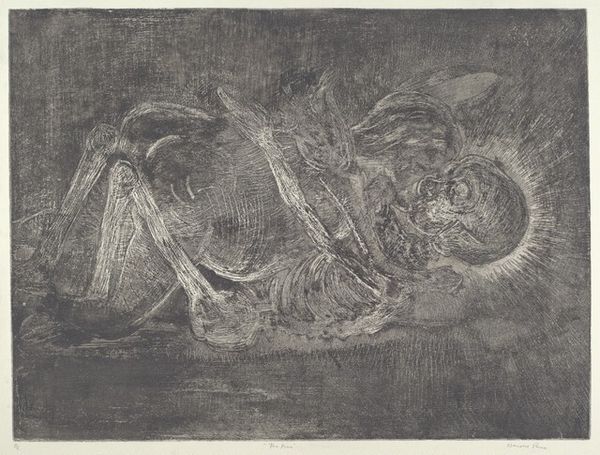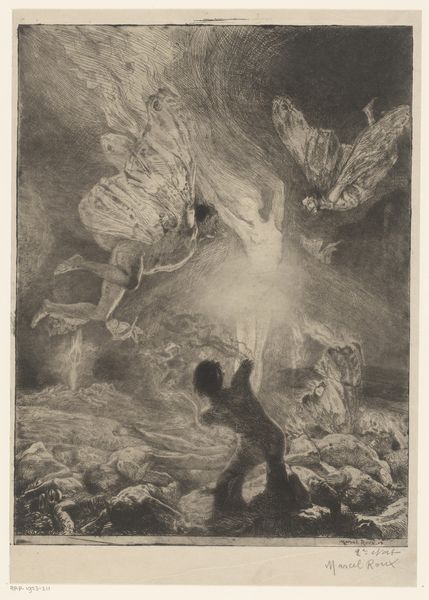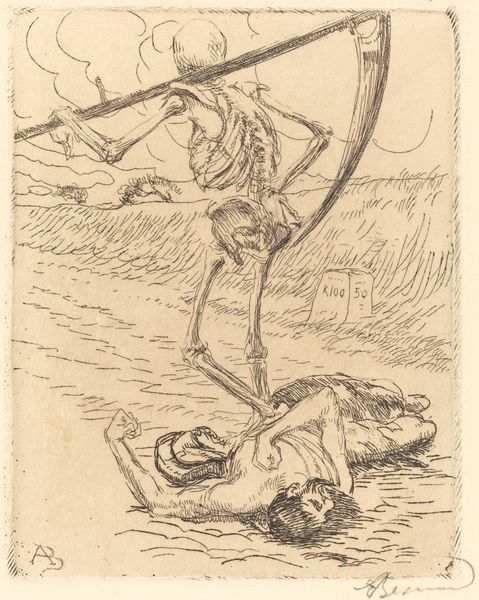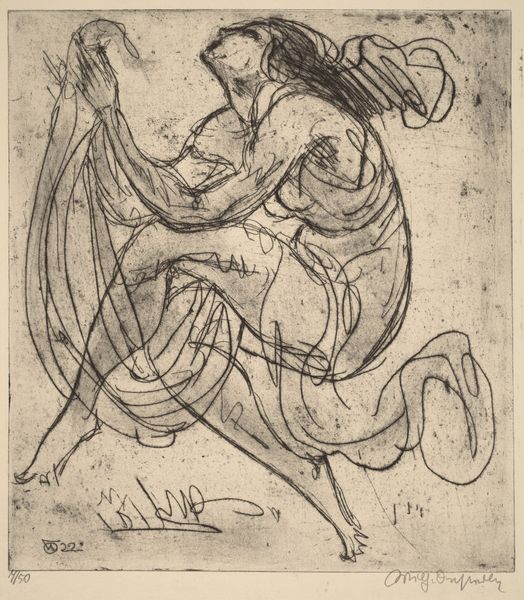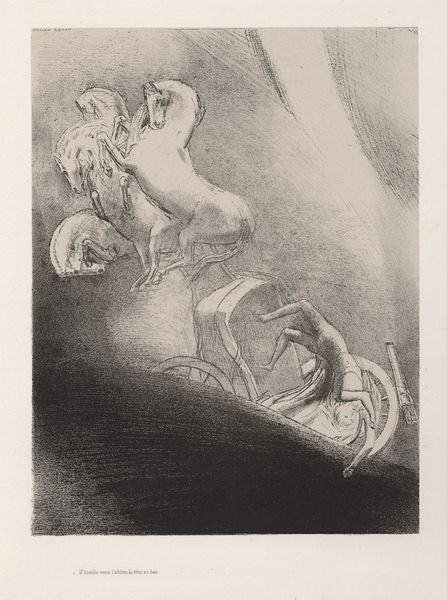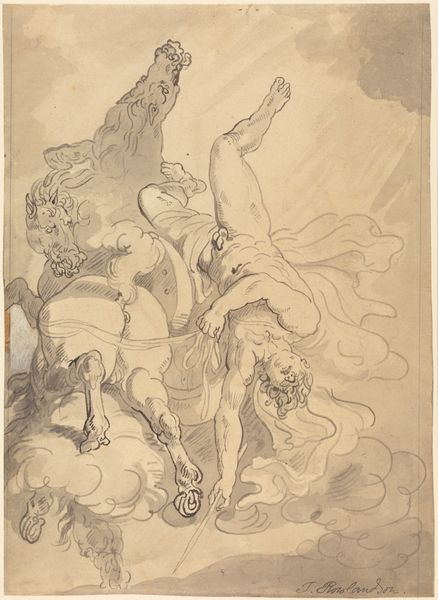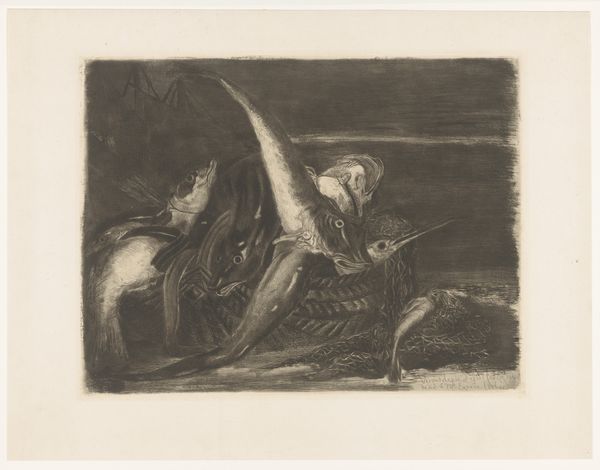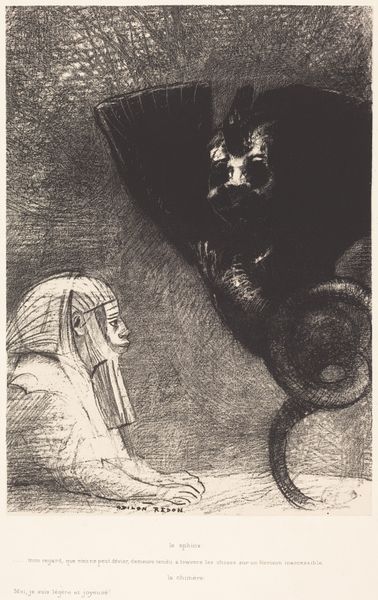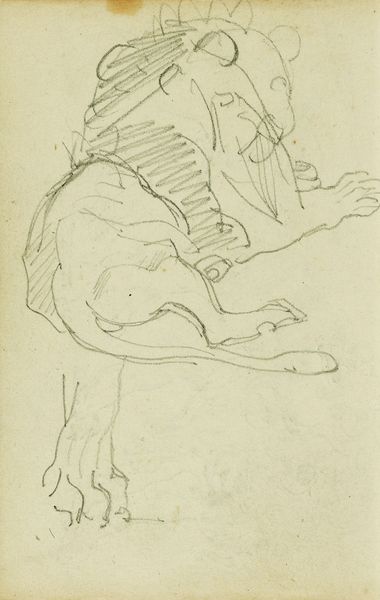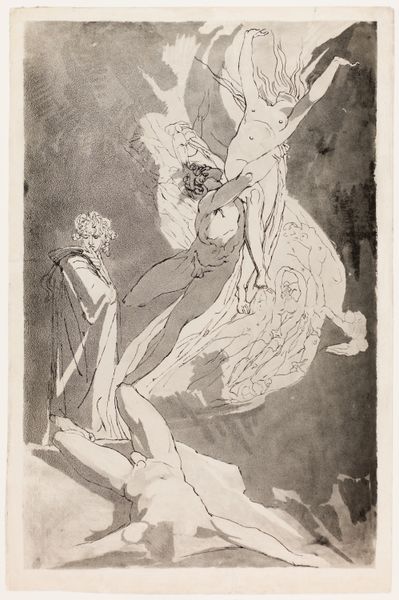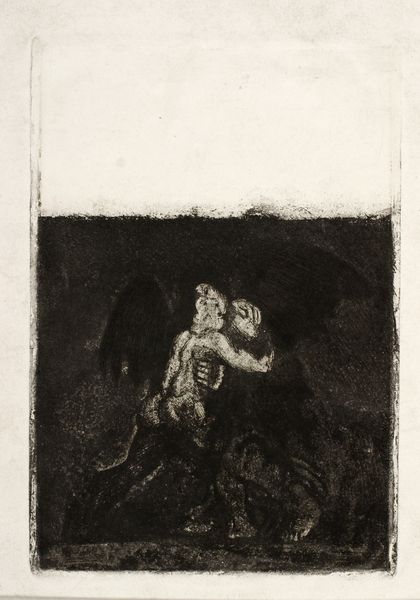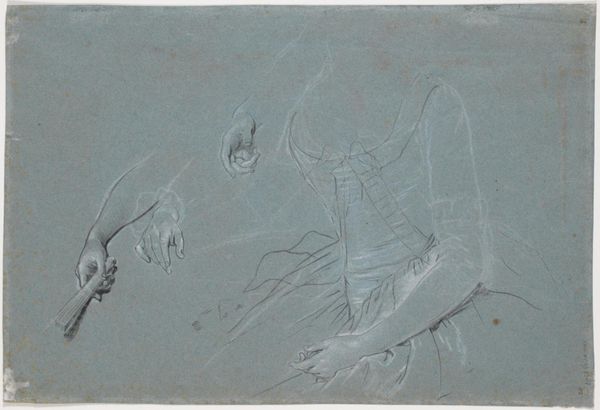
drawing, print, etching, ink
#
drawing
#
allegory
# print
#
etching
#
landscape
#
figuration
#
ink
#
symbolism
#
nude
Dimensions: image: 53.34 × 45.09 cm (21 × 17 3/4 in.) sheet: 56.2 × 47.63 cm (22 1/8 × 18 3/4 in.)
Copyright: National Gallery of Art: CC0 1.0
Curator: Luigi Conconi created this etching and ink drawing, "The Wave," in 1896. The artwork encapsulates the fin-de-siècle aesthetic with its dreamlike and symbolic qualities. Editor: It's immediately melancholic. The somber tones and the languid pose of the figure give it a sense of weary resignation, a beautiful sadness. Curator: Conconi was deeply engaged with Symbolist ideas circulating in Europe, a cultural movement reacting against industrialisation, materialism and rationalism of the West and championing subjective experience. "The Wave" fits neatly within the broader cultural currents where femininity, nature, and dream states offered alternatives. Editor: I agree, and it's interesting how he depicts the female figure almost like a fragment – is she succumbing, drifting, or embracing the beckoning void of sleep? Or is this a feminist reclamation of the unconscious, away from the male gaze and societal expectations, claiming a power and autonomy in the realm of dreams and fantasies? Curator: It’s complex isn’t it, this figure is caught between a sense of resignation and perhaps the hint of resistance? Let us also consider the societal context and power structures operating at the time: in the background lurks a shadowy bat, or harpy, traditionally symbolic of night, fear, and deception; the rising wave carries with it cultural anxieties about feminine sexuality and its inherent destructive force; and the pale moon speaks to an allegorical tradition surrounding the perceived lunacy and unpredictability of the female constitution. These signifiers cannot be disentangled from the aesthetic reading of this etching, to the possible detriment of any uncomplicated feminist framing. Editor: Absolutely. The artistic institutions and cultural norms of Conconi’s time undeniably shaped both his vision and our current interpretation, presenting multiple interpretations across gender, identity and class, thus adding further complexity. The wave, as a visual and metaphorical element, could simultaneously threaten and liberate, inviting discourse across gender, identity and power. Curator: "The Wave," with its symbolic elements and graceful composition, invites interpretations on shifting cultural and social narratives. It represents how art can simultaneously reflect and challenge our understandings. Editor: Indeed. I feel my initial impression has become far more intricate and layered; the art's influence, undoubtedly, still resonates.
Comments
No comments
Be the first to comment and join the conversation on the ultimate creative platform.
